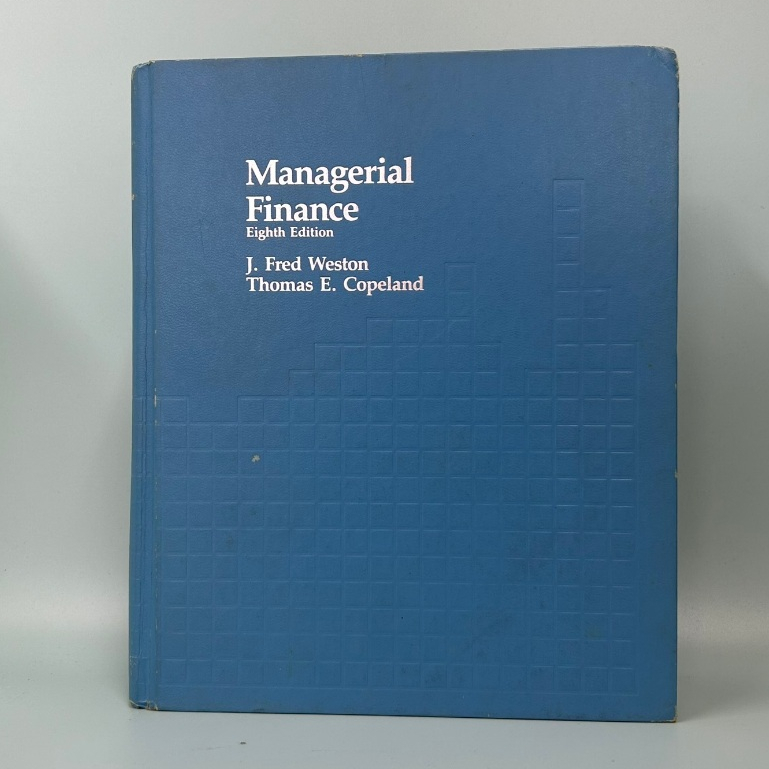หนังสือบ้านมือสองสภาพโดยรวม 75-80 เปอ
✨ จัดส่งหนังสือทุกวัน ยกเว้นวันอาทิตย์
✨ ภาพสินค้าถ่ายจากเล่มจริง สินค้ามีสต็อคพร้อมส่งทุกรายการ
✨ สามารถสอบถามเพิ่มเติมได้ผ่านแชท ยินดีให้บริการค่ะ 😊
summarize this book
Based on the information available, here is a summary of the book Managerial Finance by J. Fred Weston and Thomas E. Copeland, 8th edition (1986).
Overview
This book is a classic textbook in the field of finance. It aims to provide both doctoral students and MBAs with a comprehensive and in-depth understanding of financial theory. The authors focus on presenting the most important concepts in finance in a clear and concise manner, with a particular emphasis on testable propositions and empirical evidence.
Key Themes and Topics
The book is structured to cover the core principles of finance and their practical applications. Some of the key topics include:
Financial Theory: The first part of the book lays the theoretical groundwork. It covers the fundamental concepts of capital markets, consumption, investment, and decision-making under uncertainty. This includes topics like utility theory, state-preference theory, mean-variance portfolio theory, and arbitrage pricing theory. The book also discusses the theory and evidence on futures markets and efficient capital markets.
Corporate Policy and Applications: The second half of the book applies the theoretical concepts to real-world corporate finance decisions. This section covers critical topics such as:
Capital Budgeting: The process of evaluating and selecting long-term investments.
Capital Structure and Cost of Capital: How a company's mix of debt and equity affects its value and cost of capital.
Dividend Policy: The theory and evidence behind a company's decisions on how to distribute earnings to shareholders.
Mergers and Acquisitions: The theory and application of corporate restructuring and control.
International Financial Management: The principles of managing finance in a global context, including exchange rates and international markets.
Practical Examples: Throughout the text, the authors provide numerous examples to demonstrate how to apply financial theory to complex, real-world problems. This includes how to estimate a utility function, calculate portfolio risk and return, value a call option, and determine the terms of a merger.
Latest Research: As the 8th edition, this book was updated to reflect the latest thinking and research in the rapidly changing field of finance in the mid-1980s. This included new evidence on the Capital Asset Pricing Model (CAPM), Arbitrage Pricing Theory (APT), and option pricing models. A new chapter was added to address topics of interest to chief financial officers at the time, such as pension fund management, interest rate swaps, and leveraged buyouts.





















